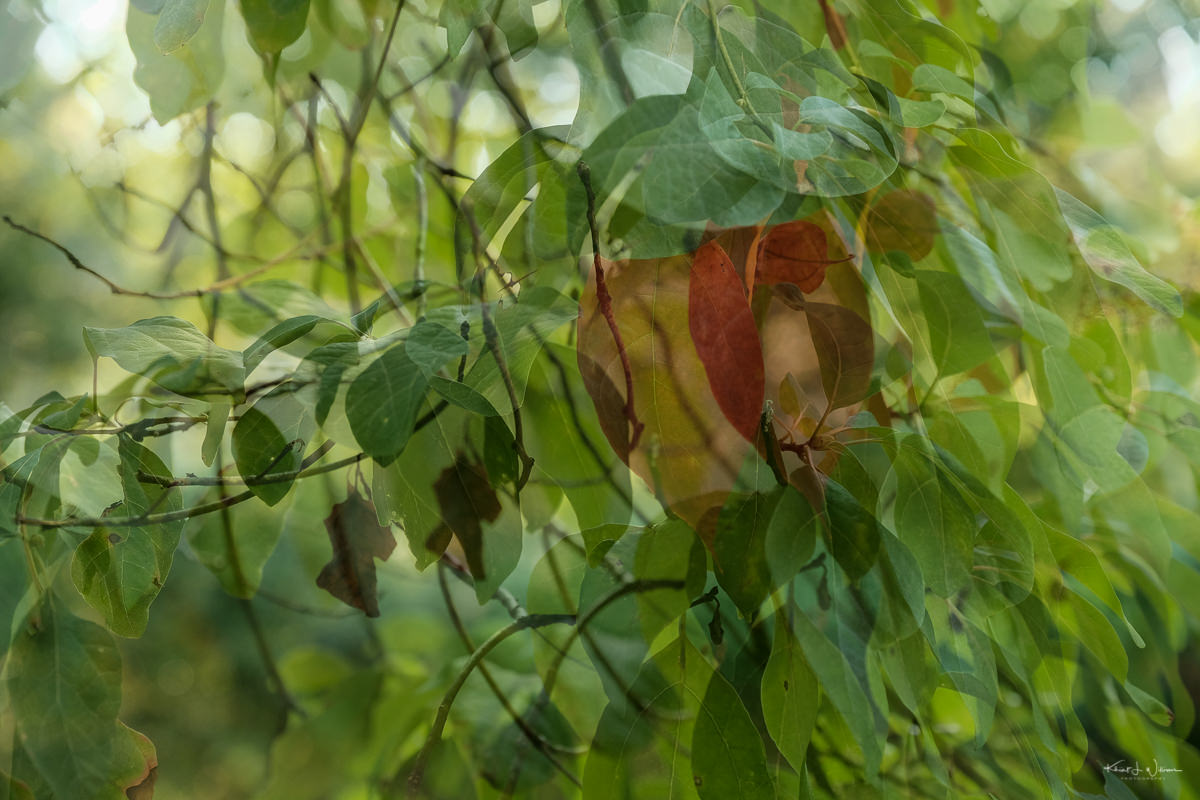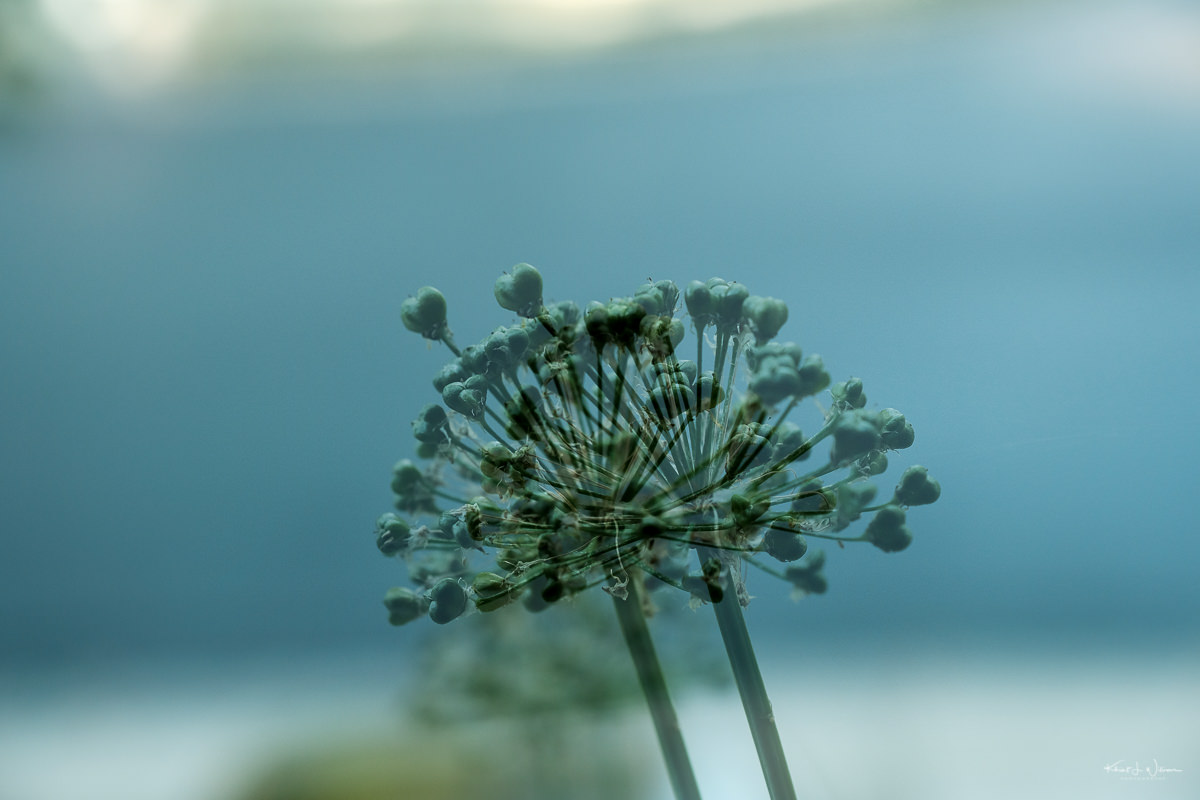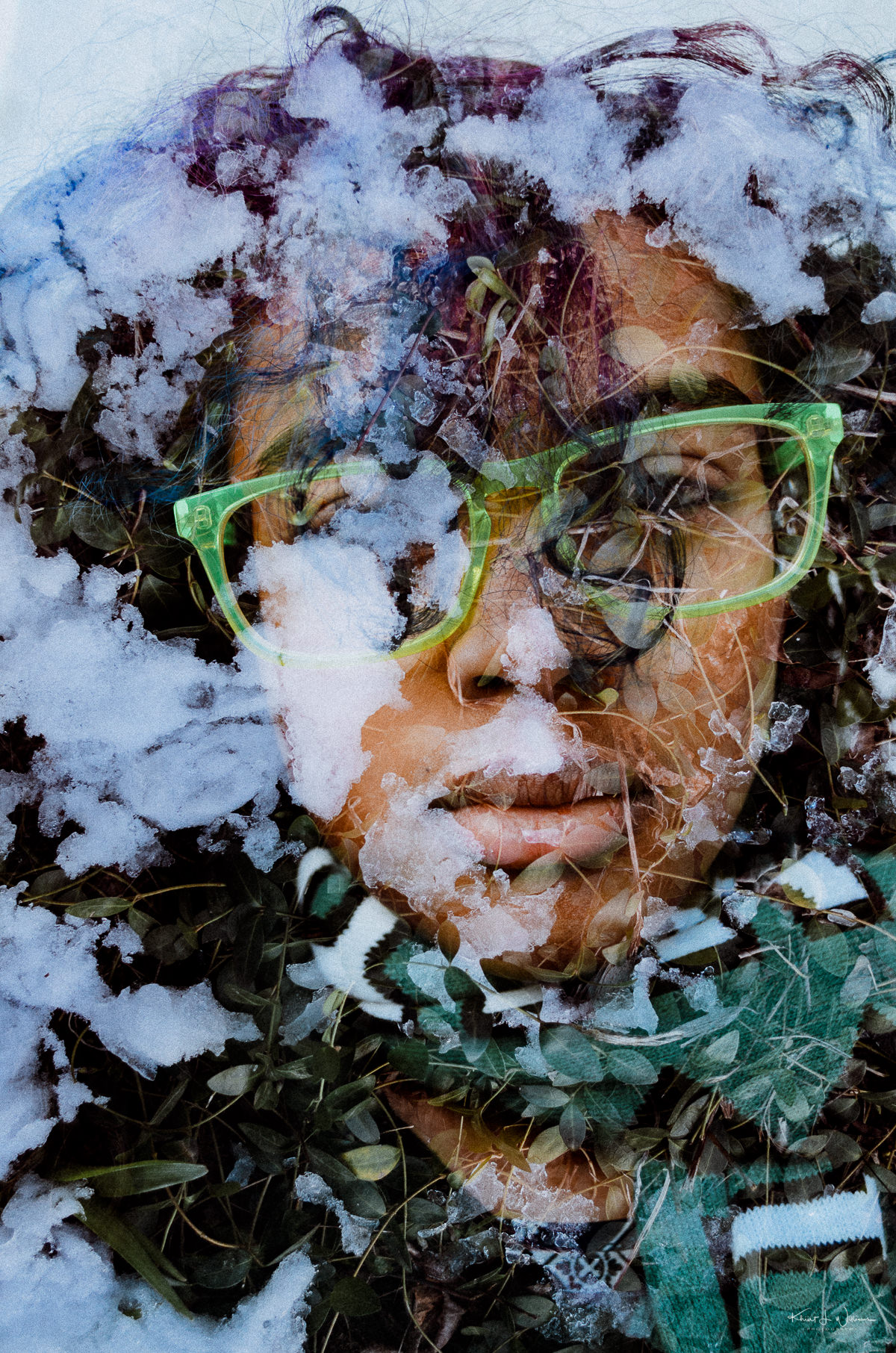Just a few words today. Some experimentation with the double exposure feature of the Fuji X-T2.
Submitted as part of the 100DaysToOffload project.Tag: Double Exposure
Double Vision
Frank’s challenge this week is fuzzy.
While I have recovered from the physical trauma of orbital decompression eye surgery, I have a new complication for my vision. I have strabismus (misaligned eyes).
At my post-surgery follow-up, the doctors performed some tests confirming my strabismus. The good news is that this is temporary. The bad news is that we need to know the meaning of "brief". Is it two months or six months? Will I do better with corrective lenses or require more surgery? We don't know. I have another follow-up with the ophthalmologists in Philadelphia in the last weeks of November. I'll know more then.
I would lie if I said I am not frustrated and feel dispirited by this news and the challenges before me.
I alternate between wearing an eye patch on each eye. Several years ago, I had cataract surgery in the left eye and laser surgery in the other eye. My left eye is used for distance vision, e.g., driving, and my right eye is used for reading and using the computer. Together, my eyes gave me a full range of view. With the misaligned eyes, this is broken.
Walking is challenging since I need both eyes to measure depth. I will not be driving. My spouse, although she has done much for me during this time, can only help so much, and I do not want to overwhelm her. She has health challenges. She will not be able to drive me to work each day or to the early morning photography workshops and photo walks I usually do at this time of year.
I am a freelance consultant. I have no vacation days and no paid time off. On Monday I will have a big request from my client. Will they allow me to work remotely until my eyesight improves? It's not a technical issue. Until my eye surgery, I worked remotely two days a week1. The client has systems and technology to support this. It's more of asking for a policy exception.
I know what I can't do. I can't drive or go on photo walks. I can work, but I need frequent breaks to rest my eyes. As I mentioned, I alternate between putting an eye patch over the left eye and then the right eye, but even with that, by the end of the day, my eyes hurt from trying to focus on the text on the screen. I have been using Siri dictation to send emails and text messages. It's not an ideal solution.
After work, I spend much time on the couch with my eyes closed. I registered for an online self-paced course but found watching the content exhausting, especially after a day of work. I cancelled all of my outdoor photography workshops.
To remain positive, I am focusing on what I can do. If/when she leaves the house to do errands, I go with my wife and photograph whatever I see. I have mainly used my iPhone 7 for this, as the Fujifilm X-T2 is too large to take on errands. If you see a man staring straight ahead while holding on tightly to his wife's arm, that is me. I'm paranoid that I'll bump into people and objects.
Frank's challenge this week is fuzzy. Frank's example image in his post is what my left eye sees now.
I have included a few photos captured using the double exposure feature of my Fujifilm X-T2. These images give some idea of what it feels like with my vision. The double exposure feature is easy to use. I select the double exposure feature on the command dial, shoot the first image, and accept the result on the LCD when the camera prompts. The camera then overlays the first image on the live viewfinder so that I can see how the double exposure will look. Pressing the shutter then captures the second image overlaid on the first.
The images are all straight-out-of-camera JPEGs.

- Before my arrival, the department head allowed us to work remotely one day a week. However, employees in both the Manhattan and London offices began resigning, attributing their departure to the burdensome commute. In response, management made an exception to the remote work policy. We were granted the flexibility of working remotely for two days a week. ↩
WE35 - Double Exposure
#WE35 is a global visual survey and creative research project conducted by explorers from around the world. The goal of #WE35 is to push your creative boundaries, share in each other’s artistic development, and forge friendships that will last a lifetime. All of this, using nothing more than a single 35mm lens. We will achieve this goal through monthly assignments designed to expand your creativity like never before, foster an encouraging community where we can discuss one another’s work and provide opportunities for critiques and constructive feedback.The Photo Frontier
Double exposure is a technique that originated with film photography where you would expose the same frame of film twice (or more). The film can only be exposed to light so much before it will stop recording information. So the part of the film that was darker after first exposure will be most receptive to the light from the second click.Sara Byrne
For the double exposure expedition, I had two challenges to overcome. The first was that I was not familiar with this feature of my Nikon D5100. How does it work? How do I enable it? What are the limitations? I needed to understand how to enable and use this feature and work with the limitations of my camera.
I found the D5100 double exposure mode in the shooting menu but decided to read the camera manual before I enable it. I learned that once enabled, I had only thirty minutes between shooting the first frame and shooting the next. After thirty minutes the D5100 would automatically disable double exposure mode.
The second challenge I had to overcome was with the composition. I had never captured double exposure images before. What sorts of interesting things could I shoot? What could I accomplish with the limitations of my camera? I struggled to think of composition. So I had to try and figure out what sort of double exposures compositions would be interesting but also done quickly. I needed to do some research. After some research1, I decided on doing portraits.
I learned with experimentation that I needed to shoot the portrait against a bright background (e.g. the sky) for the first frame. Then I could shoot the next frame as a mask. Darker images worked better for the mask.
For this image, I persuaded my daughter to let me use her as a model. I used a white piece of cardboard for the background and the ground cover in the front yard for the mask.
It took some practice to avoid overexposure, which can flare the outline of the silhouetted subject. I think I did well, given my inexperience. I think one improvement would be to compose against a pure white background, filling the frame with the subjects head.
[exif id="25437"]



